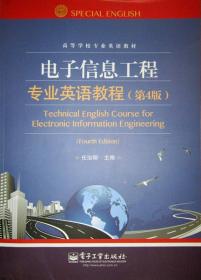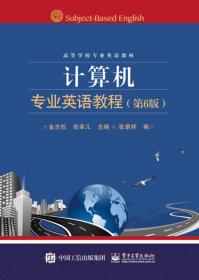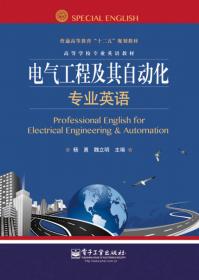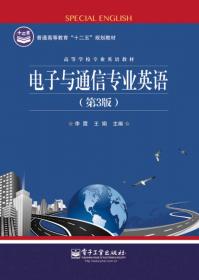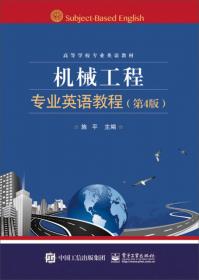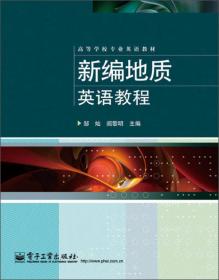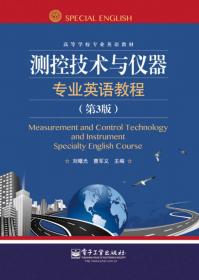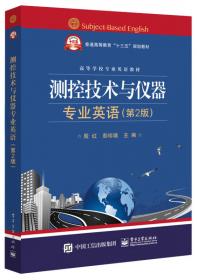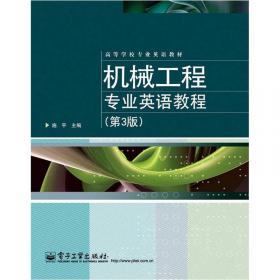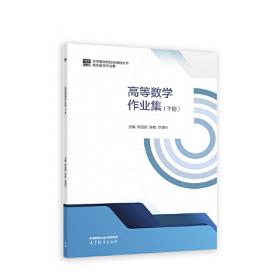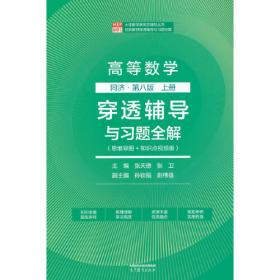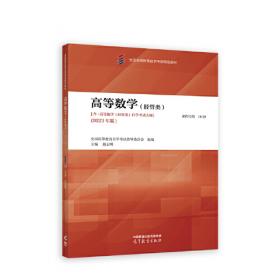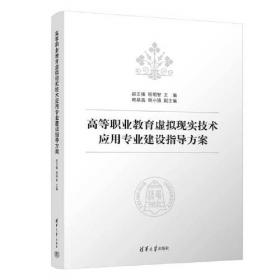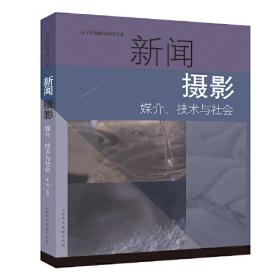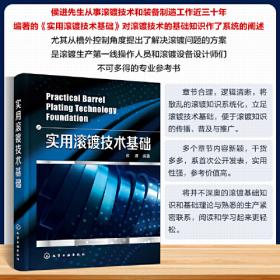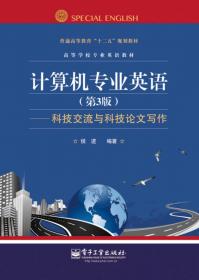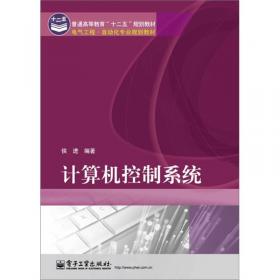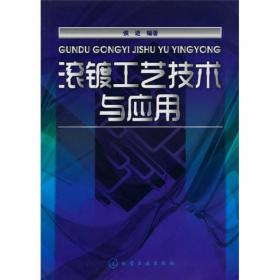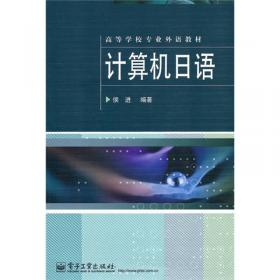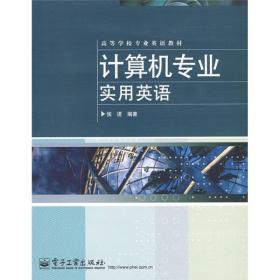高等学校专业英语教材·计算机专业英语(第2版):科技交流与科技论文写作
出版时间:
2010-09
版次:
1
ISBN:
9787121116384
定价:
32.00
装帧:
平装
开本:
16开
纸张:
胶版纸
页数:
264页
正文语种:
英语
14人买过
-
《计算机专业英语(第2版):科技交流与科技论文写作》结合作者长期在国外使用英语从事研究的经验,旨在培养读者把英文作为工作语言,提高读者专业英语的运用能力。《计算机专业英语(第2版):科技交流与科技论文写作》分为3部分,主要内容包括:如何用英语做研究报告,英文科技论文和毕业论文的写作规范及技巧,如何参加国际会议和用英文演讲,如何向国际期刊投稿,如何检索文献及怎样选择研究课题等;介绍计算机专业前沿课题动向,以及学术研究新成果、新方法、新技术,并附相关学术论文;提供长期在国外的专家学者的建议和经验,帮助他们逐步提高独立创新工作的能力。《计算机专业英语(第2版):科技交流与科技论文写作》每节后附词汇表、习题和相关附录,并提供电子课件。
《计算机专业英语(第2版):科技交流与科技论文写作》可作为高等学校计算机和信息类专业研究生和高年级本科生的专业英语教材,也可供使用英语从事科研工作的科技人员学习参考。 Part1METHODOLOGIES&SKILLS
Chapter1HowtoMakeaResearchPresentation
1.1WhenDoWeNeedtoMakeaPresentation?
1.2TheStructureofaPresentation
1.3Sample
1.4PayAttention
1.5PracticalTricks
Exercises
AppendixI
AppendixII
AppendixIII
Chapter2HowtoWriteaScientificPaper
2.1TheClearStructureofaScientificPaper
2.2Abstract
2.3IntroductionandConclusion
2.4MainBodyofaPaper
2.5Reference
2.6UsefulTricks
Exercises
AppendixI
AppendixII
Chapter3HowtoWriteaPh.D.MasterThesis
3.1TheCommonStructureofaThesis
3.2CoverPage
3.3Abstract
3.4Acknowledgements
3.5TableofContentsandListofFiguresTables
3.6Chapters
3.7ListofPublications
3.8Bibliography
Exercises
AppendixI
AppendixII
Chapter4HowtoAttendanInternationalConference
4.1Purpose
4.2CallforPaper(CFP)
4.3WriteandSubmitaPapertoanInternationalConference
4.4NotificationofAcceptance
4.5ApplyforaVisa
4.6PresentaPaper
Exercises
AppendixI
AppendixII
Chapter5HowtoSubmitaPapertoaTopJournalTransaction
5.1PrepareandSubmit
5.2SubmissionConfirmation
5.3PaperDecision
5.4ReviewersComments
5.5ReviseandSubmittheFinalPaper
Exercises
AppendixI
AppendixII
Chapter6HowtoSearchforInformationontheInternet
6.1SearchSites
6.2FullTextAccess
6.3DatabaseIndex
Exercises
AppendixI
AppendixII
Chapter7HowtoSelectaResearchSubject
7.1FollowYourInterest
7.2AttendtoNewTheoryorTechnology
7.3ThinkIndependently
7.4SearchLiteratureExtensively
7.5InterdisciplinaryResearchProvidesNewOpportunity
Exercises
Appendix
Part2NEWTECHNOLOGIES
Chapter8GeographicInformationSystem(GIS)
8.1WhatisGIS?
8.2GISTechnology
8.3FeatureofGIS
8.4TheFutureofGIS
Exercises
Appendix
Chapter9CommunicationbyAvatars
9.1WhatisAvatar?
9.2Purpose
9.3Technology
9.4ChallengesandEmergingTrends
9.5Summary
Exercises
Appendix
Chapter10NaturalLanguageProcessing
10.1WhatisNaturalLanguageProcessing(NLP)?
10.2Difficulties
10.3MajorTasksinNLP
10.4EvaluationofNaturalLanguageProcessing
Exercises
Appendix
Chapter11Content-basedImageRetrieval
11.1WhatisContent-basedImageRetrieval?
11.2ContentComparisonTechniques
11.3SemanticImageRetrieval
11.4NewMedia
11.5FutureDirections
Exercises
Appendix
Chapter12MolecularDynamicsSimulation
12.1MolecularDynamics(MD)
12.2AreasofApplication
12.3MolecularDynamicsAlgorithm-ParallelComputing
12.4MajorSoftwareforMDSimulations
12.5TheAimsofMolecularDynamicsSimulation
Exercises
Appendix
Chapter13OpenGLTechnology
13.1WhatisOpenGL(OpenGraphicsLibrary)Technology?
13.2Design
13.3OpenGL3.0
Exercises
Appendix
Chapter14DistanceLearning
14.1WhatisDistanceLearning?
14.2ElectronicLearning
14.3VirtualLearningEnvironment(VLE)
Exercises
Appendix
Chapter15SemanticWeb
15.1Definition
15.2Purpose
15.3SkepticalReactions
15.4Components
Exercises
Appendix
Chapter16Ontology
16.1Definition
16.2ComponentsofOntologies
16.3Elements
16.4OntologyLanguages
Exercises
Appendix
Part3ADVICES&EXAMPLES
Chapter17TenRulesforaSuccessfulPresentation
17.1UsetheSameLanguageoftheListener
17.2KeepSMART
17.3PlanandScheduleYourPresentation
17.4KeepItShortandSimple(KISS)
17.5MakeYourAudienceActiveInsteadofReactive
17.6StructureYourThinkingandMakeItVisible
17.7DontLettheListenerLoseHisWay
17.8UseStimulus
17.9UsePictures
17.10MaketheStartAttractiveandtheEndMemorable
Chapter18PromotingInternationalScienceandTechnologyCollaboration
18.1Introduction
18.2StudyinginJapanasaForeignStudent
18.3ResearchCultureinJapan
18.4JapaneseResearchStyle
18.5EstablishingaJointResearchDuringaVisitingStayinSwitzerland
18.6PracticalInformationonConductingResearchinJapan
18.7PracticalInformationonStudyinginJapan
附录A参考译文
第1部分方法和技巧
第1章如何做研究报告
第2章如何写科技论文
第3章如何写博士硕士论文
第4章如何参加国际会议
第5章怎样向顶级期刊学报投稿
第6章怎样上网检索信息
第7章怎样选择研究课题
第2部分前沿技术
第8章地理信息系统
第9章借助虚拟人交流
第10章自然语言处理
第11章基于内容的图像检索
第12章分子动力学模拟
第13章OpenGL技术
第14章远程学习
第15章语义网
第16章本体论
第3部分建议和榜样
第17章成功演讲的十大准则
第18章推进国际科学与技术合作
附录B参考论文
附录C英文论文写作自查表
附录D学位论文写作自查表
附录E总单词表
附录FSuggestedAnswersforDiscussion
参考文献
-
内容简介:
《计算机专业英语(第2版):科技交流与科技论文写作》结合作者长期在国外使用英语从事研究的经验,旨在培养读者把英文作为工作语言,提高读者专业英语的运用能力。《计算机专业英语(第2版):科技交流与科技论文写作》分为3部分,主要内容包括:如何用英语做研究报告,英文科技论文和毕业论文的写作规范及技巧,如何参加国际会议和用英文演讲,如何向国际期刊投稿,如何检索文献及怎样选择研究课题等;介绍计算机专业前沿课题动向,以及学术研究新成果、新方法、新技术,并附相关学术论文;提供长期在国外的专家学者的建议和经验,帮助他们逐步提高独立创新工作的能力。《计算机专业英语(第2版):科技交流与科技论文写作》每节后附词汇表、习题和相关附录,并提供电子课件。
《计算机专业英语(第2版):科技交流与科技论文写作》可作为高等学校计算机和信息类专业研究生和高年级本科生的专业英语教材,也可供使用英语从事科研工作的科技人员学习参考。
-
目录:
Part1METHODOLOGIES&SKILLS
Chapter1HowtoMakeaResearchPresentation
1.1WhenDoWeNeedtoMakeaPresentation?
1.2TheStructureofaPresentation
1.3Sample
1.4PayAttention
1.5PracticalTricks
Exercises
AppendixI
AppendixII
AppendixIII
Chapter2HowtoWriteaScientificPaper
2.1TheClearStructureofaScientificPaper
2.2Abstract
2.3IntroductionandConclusion
2.4MainBodyofaPaper
2.5Reference
2.6UsefulTricks
Exercises
AppendixI
AppendixII
Chapter3HowtoWriteaPh.D.MasterThesis
3.1TheCommonStructureofaThesis
3.2CoverPage
3.3Abstract
3.4Acknowledgements
3.5TableofContentsandListofFiguresTables
3.6Chapters
3.7ListofPublications
3.8Bibliography
Exercises
AppendixI
AppendixII
Chapter4HowtoAttendanInternationalConference
4.1Purpose
4.2CallforPaper(CFP)
4.3WriteandSubmitaPapertoanInternationalConference
4.4NotificationofAcceptance
4.5ApplyforaVisa
4.6PresentaPaper
Exercises
AppendixI
AppendixII
Chapter5HowtoSubmitaPapertoaTopJournalTransaction
5.1PrepareandSubmit
5.2SubmissionConfirmation
5.3PaperDecision
5.4ReviewersComments
5.5ReviseandSubmittheFinalPaper
Exercises
AppendixI
AppendixII
Chapter6HowtoSearchforInformationontheInternet
6.1SearchSites
6.2FullTextAccess
6.3DatabaseIndex
Exercises
AppendixI
AppendixII
Chapter7HowtoSelectaResearchSubject
7.1FollowYourInterest
7.2AttendtoNewTheoryorTechnology
7.3ThinkIndependently
7.4SearchLiteratureExtensively
7.5InterdisciplinaryResearchProvidesNewOpportunity
Exercises
Appendix
Part2NEWTECHNOLOGIES
Chapter8GeographicInformationSystem(GIS)
8.1WhatisGIS?
8.2GISTechnology
8.3FeatureofGIS
8.4TheFutureofGIS
Exercises
Appendix
Chapter9CommunicationbyAvatars
9.1WhatisAvatar?
9.2Purpose
9.3Technology
9.4ChallengesandEmergingTrends
9.5Summary
Exercises
Appendix
Chapter10NaturalLanguageProcessing
10.1WhatisNaturalLanguageProcessing(NLP)?
10.2Difficulties
10.3MajorTasksinNLP
10.4EvaluationofNaturalLanguageProcessing
Exercises
Appendix
Chapter11Content-basedImageRetrieval
11.1WhatisContent-basedImageRetrieval?
11.2ContentComparisonTechniques
11.3SemanticImageRetrieval
11.4NewMedia
11.5FutureDirections
Exercises
Appendix
Chapter12MolecularDynamicsSimulation
12.1MolecularDynamics(MD)
12.2AreasofApplication
12.3MolecularDynamicsAlgorithm-ParallelComputing
12.4MajorSoftwareforMDSimulations
12.5TheAimsofMolecularDynamicsSimulation
Exercises
Appendix
Chapter13OpenGLTechnology
13.1WhatisOpenGL(OpenGraphicsLibrary)Technology?
13.2Design
13.3OpenGL3.0
Exercises
Appendix
Chapter14DistanceLearning
14.1WhatisDistanceLearning?
14.2ElectronicLearning
14.3VirtualLearningEnvironment(VLE)
Exercises
Appendix
Chapter15SemanticWeb
15.1Definition
15.2Purpose
15.3SkepticalReactions
15.4Components
Exercises
Appendix
Chapter16Ontology
16.1Definition
16.2ComponentsofOntologies
16.3Elements
16.4OntologyLanguages
Exercises
Appendix
Part3ADVICES&EXAMPLES
Chapter17TenRulesforaSuccessfulPresentation
17.1UsetheSameLanguageoftheListener
17.2KeepSMART
17.3PlanandScheduleYourPresentation
17.4KeepItShortandSimple(KISS)
17.5MakeYourAudienceActiveInsteadofReactive
17.6StructureYourThinkingandMakeItVisible
17.7DontLettheListenerLoseHisWay
17.8UseStimulus
17.9UsePictures
17.10MaketheStartAttractiveandtheEndMemorable
Chapter18PromotingInternationalScienceandTechnologyCollaboration
18.1Introduction
18.2StudyinginJapanasaForeignStudent
18.3ResearchCultureinJapan
18.4JapaneseResearchStyle
18.5EstablishingaJointResearchDuringaVisitingStayinSwitzerland
18.6PracticalInformationonConductingResearchinJapan
18.7PracticalInformationonStudyinginJapan
附录A参考译文
第1部分方法和技巧
第1章如何做研究报告
第2章如何写科技论文
第3章如何写博士硕士论文
第4章如何参加国际会议
第5章怎样向顶级期刊学报投稿
第6章怎样上网检索信息
第7章怎样选择研究课题
第2部分前沿技术
第8章地理信息系统
第9章借助虚拟人交流
第10章自然语言处理
第11章基于内容的图像检索
第12章分子动力学模拟
第13章OpenGL技术
第14章远程学习
第15章语义网
第16章本体论
第3部分建议和榜样
第17章成功演讲的十大准则
第18章推进国际科学与技术合作
附录B参考论文
附录C英文论文写作自查表
附录D学位论文写作自查表
附录E总单词表
附录FSuggestedAnswersforDiscussion
参考文献
查看详情
-
 2
2
七五品
-
八五品
陕西省西安市
平均发货6小时
成功完成率91.94%
-
 2
2
九品
北京市通州区
平均发货8小时
成功完成率87.34%
-
计算机专业英语
本店经营图书主为8-95品二手书,本着认真负责的态度上传图书,尽可能详细的反应书本的真实情况
九五品
北京市通州区
平均发货16小时
成功完成率95.13%
-
九五品
北京市通州区
平均发货31小时
成功完成率82.75%
-
 4
4
九品
甘肃省兰州市
平均发货38小时
成功完成率72.88%
-
九品
陕西省西安市
平均发货6小时
成功完成率91.94%

 占位居中
占位居中














